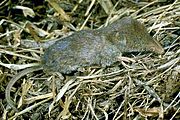User:PresN/shrews
Soricids[edit]
Subfamily Soricinae[edit]
| Common name | Scientific name and subspecies | Range | Size and ecology | IUCN status and estimated population |
|---|---|---|---|---|
| Assam mole shrew
|
A. assamensis Anderson, 1875 |

|
Size: Habitat: Forest and rocky areas[1] Diet: |
LC
|
| Chinese mole shrew
|
A. squamipes H. Milne-Edwards, 1872 |

|
Size: UNKNOWN LENGTH SEEN: 300 to 3,100–300 cm (118 to 1,220–118 in)[2] Habitat: Forest[3] Diet: VERIFY ME: More food and energy, male body length ranged from 94[2] |
LC
|
| Giant mole shrew
|
A. schmidi Petter, 1963 |
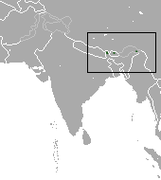
|
Size: Habitat: Forest[4] Diet: |
DD
|
| Taiwanese mole shrew | A. yamashinai Kuroda, 1935 |

|
Size: Habitat: Forest and grassland[5] Diet: |
LC
|
| Common name | Scientific name and subspecies | Range | Size and ecology | IUCN status and estimated population |
|---|---|---|---|---|
| Elliot's short-tailed shrew | B. hylophaga Elliot, 1899 Two subspecies
|

|
Size: UNKNOWN LENGTH SEEN: [convert: invalid number][6] Habitat: Grassland, shrubland, and forest[7] Diet: VERIFY ME: Various invertebrates as well as small vertebrates and some plant material (caire et al[7]VERIFY POSSIBLE FOOD: Leaves[6] |
LC
|
| Everglades short-tailed shrew
|
B. peninsulae Merriam, 1895 |
Size: Habitat: Diet: |
NE
| |
| Northern short-tailed shrew | B. brevicauda (Say, 1823) Eleven subspecies
|

|
Size: VERIFY ME: 7–11 cm (3–4 in) long, plus 1–3 cm (0–1 in) tail[8] Habitat: Inland wetlands, shrubland, and forest[9] Diet: VERIFY ME: Earthworms, slugs, snails, insect larvae, millipedes, other invertebrates, and small vertebrates (especially mice in winter)[9]VERIFY POSSIBLE FOOD: Leaves[8] |
LC
|
| Southern short-tailed shrew | B. carolinensis (Bachman, 1837) Three subspecies
|
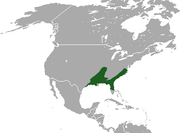
|
Size: VERIFY ME: 7–11 cm (3–4 in) long, plus 1–3 cm (0–1 in) tail[10] Habitat: Forest, shrubland, grassland, and inland wetlands[11] Diet: VERIFY ME: Small vertebrates as well as large numbers of invertebrates (which may be immobilized by toxic saliva), and some vegetable matter[11]VERIFY POSSIBLE FOOD: Leaves[10] |
LC
|
| Common name | Scientific name and subspecies | Range | Size and ecology | IUCN status and estimated population |
|---|---|---|---|---|
| Asiatic short-tailed shrew
|
B. quadraticauda H. Milne-Edwards, 1872 |

|
Size: Habitat: Forest and shrubland[12] Diet: |
NT
|
| Burmese short-tailed shrew
|
B. wardi Thomas, 1915 |

|
Size: Habitat: Forest[13] Diet: |
LC
|
| Indochinese short-tailed shrew
|
B. griselda Thomas, 1912 |

|
Size: Habitat: Forest[14] Diet: |
LC
|
| Common name | Scientific name and subspecies | Range | Size and ecology | IUCN status and estimated population |
|---|---|---|---|---|
| Bornean water shrew
|
C. phaeura Thomas, 1898 |

|
Size: Habitat: Forest and inland wetlands[15] Diet: VERIFY ME: Primarily composed of invertebrates[15] |
EN
|
| Chinese water shrew
|
C. styani De Winton, 1899 |

|
Size: Habitat: Forest, shrubland, and inland wetlands[16] Diet: |
LC
|
| Himalayan water shrew
|
C. himalayica (Gray, 1842) |

|
Size: UNKNOWN LENGTH SEEN: 220–250–220 cm (87–98–87 in)[17] Habitat: Forest and inland wetlands[18] Diet: VERIFY ME: As much as three times their body weight in 24 hours and can survive only a few hours without feeding[17] |
LC
|
| Japanese water shrew | C. platycephalus Temminck, 1842 |

|
Size: Habitat: Inland wetlands[19] Diet: |
LC
|
| Malayan water shrew
|
C. hantu Harrison, 1958 |

|
Size: Habitat: Forest and inland wetlands[20] Diet: |
NT
|
| Sumatran water shrew
|
C. sumatrana (Thomas, 1921) |

|
Size: Habitat: Forest and inland wetlands[21] Diet: VERIFY ME: Benthic organisms including insects, aquatic larvae, crustaceans and small fishes[21] |
DD
|
| Common name | Scientific name and subspecies | Range | Size and ecology | IUCN status and estimated population |
|---|---|---|---|---|
| De Winton's shrew
|
C. hypsibia De Winton, 1899 |
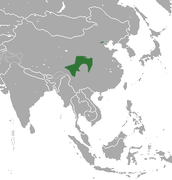
|
Size: Habitat: Forest and shrubland[22] Diet: |
LC
|
| Lamulate shrew
|
C. lamula (Thomas, 1912) |

|
Size: Habitat: Forest[23] Diet: |
LC
|
| Lesser Taiwanese shrew
|
C. sodalis (Thomas, 1913) |

|
Size: Habitat: Forest[24] Diet: |
DD
|
| Lowe's shrew
|
C. parca (Allen, 1923) Three subspecies
|

|
Size: Habitat: Forest[25] Diet: VERIFY POSSIBLE FOOD: Insectivores[25] |
LC
|
| Pygmy brown-toothed shrew
|
C. parva Allen, 1923 |

|
Size: Habitat: Unknown[26] Diet: |
DD
|
| Salenski's shrew
|
C. salenskii (Kastchenko, 1907) |

|
Size: Habitat: Unknown[27] Diet: |
DD
|
| Smith's shrew
|
C. smithii (Thomas, 1911) |

|
Size: Habitat: Forest[28] Diet: |
NT
|
| Van Sung's shrew
|
C. caovansunga (Lunde & Musser & Son, 2003) |

|
Size: Habitat: Forest[29] Diet: |
DD
|
| Common name | Scientific name and subspecies | Range | Size and ecology | IUCN status and estimated population |
|---|---|---|---|---|
| Big Mexican small-eared shrew
|
C. magna (Merriam, 1895) |

|
Size: Habitat: Forest[30] Diet: |
VU
|
| Blackish small-eared shrew
|
C. nigrescens (J. A. Allen, 1895) |

|
Size: Habitat: Forest[31] Diet: |
LC
|
| Blind small-eared shrew
|
C. niausa Moreno Cárdenas & Albuja, 2014 |
Size: Habitat: Forest, grassland, and rocky areas[32] Diet: |
DD
| |
| Celaque broad-clawed shrew
|
C. celaque Woodman, 2015 |
Size: Habitat: Forest[33] Diet: |
DD
| |
| Central American least shrew | C. orophila (Allen, 1895) |

|
Size: Habitat: Forest, shrubland, and inland wetlands[34] Diet: |
DD
|
| Central Mexican broad-clawed shrew
|
C. alticola (Merriam, 1895) |

|
Size: Habitat: Forest and grassland[35] Diet: VERIFY POSSIBLE FOOD: Insectivorous[35] |
DD
|
| Colombian small-eared shrew
|
C. colombiana Woodman & Timm, 1993 |

|
Size: Habitat: Forest[36] Diet: |
LC
|
| Darién small-eared shrew
|
C. merus Goldman, 1912 |

|
Size: Habitat: Forest[37] Diet: |
EN
|
| Dinira small-eared shrew
|
C. dinirensis Quiroga-Carmona & DoNascimiento, 2016 |
Size: Habitat: Forest[38] Diet: |
DD
| |
| Eastern Cordillera small-footed shrew
|
C. brachyonyx Woodman, 2003 |

|
Size: Habitat: Unknown[39] Diet: |
DD
|
| Ecuadorian small-eared shrew
|
C. equatoris Thomas, 1912 |

|
Size: Habitat: Forest and unknown[40] Diet: |
LC
|
| Enders's small-eared shrew
|
C. endersi Setzer, 1950 |

|
Size: Habitat: Forest[41] Diet: |
EN
|
| Goldman's broad-clawed shrew
|
C. goldmani (Merriam, 1895) Two subspecies
|

|
Size: Habitat: Forest[42] Diet: |
LC
|
| Goodwin's broad-clawed shrew
|
C. goodwini Jackson, 1933 |

|
Size: Habitat: Forest[43] Diet: |
LC
|
| Grizzled Mexican small-eared shrew
|
C. obscura (Merriam, 1895) |
Size: Habitat: Forest[44] Diet: VERIFY POSSIBLE FOOD: Insectivorous[44] |
LC
| |
| Guatemalan broad-clawed shrew
|
C. griseoventris Jackson, 1933 |

|
Size: Habitat: Forest[45] Diet: VERIFY POSSIBLE FOOD: Insectivorous[45] |
EN
|
| Honduran small-eared shrew
|
C. hondurensis Woodman & Timm, 1992 |

|
Size: Habitat: Forest[46] Diet: |
DD
|
| Mam broad-clawed shrew
|
C. mam Woodman, 2010 |
Size: Habitat: Forest[47] Diet: VERIFY ME: Earthworms, insects, and plant matter (woodman 2010)[48] |
DD
| |
| Medellín small-eared shrew | C. medellinia Thomas, 1921 |

|
Size: Habitat: Forest[49] Diet: |
LC
|
| Merida small-eared shrew
|
C. meridensis Thomas, 1898 |

|
Size: UNKNOWN LENGTH SEEN: 800 to 1–800 cm (315 to 0–315 in)[50] Habitat: Forest and shrubland[51] Diet: VERIFY POSSIBLE FOOD: Insects[51]VERIFY ME: Less common prey items, including nestling rodents, lizards, and the eggs and chicks of ground-nesting birds[50] |
VU
|
| Merriam's small-eared shrew
|
C. merriami Choate, 1970 |
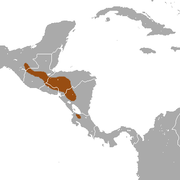
|
Size: Habitat: Forest[52] Diet: |
LC
|
| Mexican small-eared shrew
|
C. mexicana (Coues, 1870) |

|
Size: Habitat: Forest[53] Diet: |
LC
|
| Muscular broad-clawed shrew
|
C. lacertosus Woodman, 2010 |
Size: Habitat: Forest[54] Diet: |
DD
| |
| Nelson's small-eared shrew
|
C. nelsoni Merriam, 1895 |

|
Size: Habitat: Forest and grassland[55] Diet: VERIFY POSSIBLE FOOD: Insects[55] |
CR
|
| North American least shrew | C. parva (Say, 1823) Five subspecies
|

|
Size: UNKNOWN LENGTH SEEN: [convert: invalid number][56] Habitat: Forest, shrubland, grassland, inland wetlands, and rocky areas[57] Diet: VERIFY ME: Insects and other invertebrates (e[57]VERIFY POSSIBLE FOOD: Leaves[56] |
LC
|
| Oaxacan broad-clawed shrew
|
C. peregrina (Merriam, 1895) |
Size: Habitat: Forest[58] Diet: VERIFY POSSIBLE FOOD: Insectivorous[58] |
DD
| |
| Omoa broad-clawed shrew | C. mccarthyi , |
180px|alt=Map of range |
Size: Habitat: Forest[59] Diet: |
DD
|
| Perija small-eared shrew | C. perijensis , |
180px|alt=Map of range |
Size: Habitat: Forest and grassland[60] Diet: |
DD
|
| Peruvian small-eared shrew
|
C. peruviensis Vivar & Pacheco & Valqui, 1997 |

|
Size: Habitat: Forest[61] Diet: |
DD
|
| Phillips's small-eared shrew
|
C. phillipsii (Schaldach, 1966) |
Size: Habitat: Forest[62] Diet: VERIFY POSSIBLE FOOD: Insectivorous[62] |
VU
| |
| Santa Barbara broad-clawed shrew | C. cavatorculus , |
180px|alt=Map of range |
Size: Habitat: Forest[63] Diet: |
DD
|
| Scaly-footed small-eared shrew
|
C. squamipes (Allen, 1916) |

|
Size: Habitat: Forest[64] Diet: |
LC
|
| Sierra de Aroa shrew
|
C. aroensis Quiroga-Carmona & Molinari, 2012 |
Size: Habitat: Forest[65] Diet: |
EN
| |
| Talamancan small-eared shrew
|
C. gracilis Miller, 1911 |

|
Size: Habitat: Forest and grassland[66] Diet: |
LC
|
| Tamá small-eared shrew
|
C. tamensis Woodman, 2002 |

|
Size: Habitat: Forest[67] Diet: |
LC
|
| Thomas's small-eared shrew
|
C. thomasi (Merriam, 1897) |

|
Size: Habitat: Forest and grassland[68] Diet: |
LC
|
| Tropical small-eared shrew
|
C. tropicalis (Merriam, 1895) |

|
Size: Habitat: Forest, grassland, and inland wetlands[69] Diet: |
DD
|
| Venezuelan small-eared shrew | C. venezuelensis , |
180px|alt=Map of range |
Size: Habitat: Forest[70] Diet: |
DD
|
| Wandering small-eared shrew
|
C. montivaga (Anthony, 1921) |
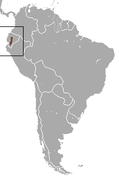
|
Size: Habitat: Forest[71] Diet: VERIFY ME: Invertebrates including beetles, spiders, and caterpillars[71] |
LC
|
| Yalijux shrew
|
C. oreoryctes Woodman, 2011 |
Size: Habitat: Forest[72] Diet: |
DD
| |
| Yucatan small-eared shrew
|
C. mayensis (Merriam, 1901) |

|
Size: Habitat: Forest[73] Diet: |
LC
|
| Common name | Scientific name and subspecies | Range | Size and ecology | IUCN status and estimated population |
|---|---|---|---|---|
| Hodgson's brown-toothed shrew
|
E. caudatus (Horsfield, 1851) Three subspecies
|
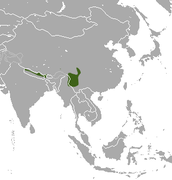
|
Size: Habitat: Forest, shrubland, and grassland[74] Diet: |
LC
|
| Long-tailed brown-toothed shrew
|
E. leucops (Horsfield, 1855) Two subspecies
|
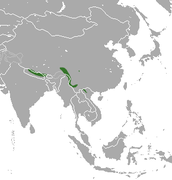
|
Size: Habitat: Forest[75] Diet: VERIFY POSSIBLE FOOD: Insectivores[75] |
LC
|
| Long-tailed mountain shrew
|
E. macrurus Blanford, 1888 |

|
Size: Habitat: Forest[76] Diet: |
LC
|
| Taiwanese brown-toothed shrew
|
E. fumidus (Thomas, 1913) |
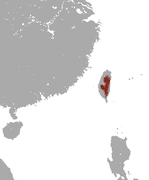
|
Size: Habitat: Forest and shrubland[77] Diet: |
LC
|
| Common name | Scientific name and subspecies | Range | Size and ecology | IUCN status and estimated population |
|---|---|---|---|---|
| Mexican shrew
|
M. gigas (Merriam, 1897) |

|
Size: Habitat: Forest and shrubland[78] Diet: |
LC
|
| Common name | Scientific name and subspecies | Range | Size and ecology | IUCN status and estimated population |
|---|---|---|---|---|
| Elegant water shrew
|
N. elegans H. Milne-Edwards, 1870 |

|
Size: UNKNOWN LENGTH SEEN: [convert: invalid number][79] Habitat: Forest and inland wetlands[80] Diet: VERIFY POSSIBLE FOOD: Insects[79] |
LC
|
| Common name | Scientific name and subspecies | Range | Size and ecology | IUCN status and estimated population |
|---|---|---|---|---|
| Eurasian water shrew | N. fodiens (Pennant, 1771) |

|
Size: UNKNOWN LENGTH SEEN: 3 and 12–3 cm (1 and 5–1 in)[81] Habitat: Forest, grassland, inland wetlands, intertidal marine, and coastal marine[82] Diet: VERIFY POSSIBLE FOOD: Insectivores[82]VERIFY ME: Almost exclusively underwater, efficiently preying on aquatic invertebrates such as snails, mollusks, freshwater insects, and also small vertebrates such as fish, amphibians and frogs[81] |
LC
|
| Iberian water shrew
|
N. anomalus A. Cabrera, 1907 |
Size: Habitat: Inland wetlands[83] Diet: |
LC
| |
| Mediterranean water shrew | N. milleri Mottaz, 1907 |

|
Size: Habitat: Inland wetlands[84] Diet: |
LC
|
| Transcaucasian water shrew
|
N. teres Miller, 1908 |

|
Size: Habitat: Forest and inland wetlands[85] Diet: VERIFY ME: Aquatic (invertebrates, molluscs, fish roe and fingerlings, tadpoles, froglings) and terrestrial (beetles, earthworms, sometimes young rodents) animals[85] |
LC
|
| Common name | Scientific name and subspecies | Range | Size and ecology | IUCN status and estimated population |
|---|---|---|---|---|
| Crawford's gray shrew | N. crawfordi (Coues, 1877) |

|
Size: UNKNOWN LENGTH SEEN: [convert: invalid number][86] Habitat: Forest, shrubland, grassland, and desert[87] Diet: VERIFY ME: Insect larve and adults[86] |
LC
|
| Large-eared gray shrew
|
N. evotis (Coues, 1877) |
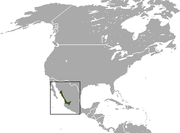
|
Size: Habitat: Shrubland and grassland[88] Diet: |
LC
|
| Notiosorex cockrumi
|
N. cockrumi Baker, O'Neill & McAliley, 2003 |
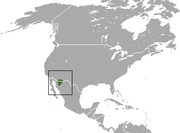
|
Size: Habitat: Shrubland and desert[89] Diet: VERIFY POSSIBLE FOOD: Insectivorous[89] |
LC
|
| Villa's gray shrew
|
N. villai Carraway & Timm, 2000 |

|
Size: Habitat: Forest[90] Diet: |
VU
|
| Common name | Scientific name and subspecies | Range | Size and ecology | IUCN status and estimated population |
|---|---|---|---|---|
| Alaska tiny shrew
|
S. yukonicus Dokuchaev, 1997 |

|
Size: Habitat: Inland wetlands[91] Diet: |
LC
|
| Alpine shrew
|
S. alpinus Schinz, 1837 |

|
Size: VERIFY ME: 6–1 cm (2–0 in) long, plus 5–1 cm (2–0 in) tail[92] Habitat: Forest, grassland, and rocky areas[93] Diet: VERIFY ME: Arthropods and molluscs (spitzenberger 1990)[93]VERIFY POSSIBLE FOOD: Insects[92] |
NT
|
| American pygmy shrew
|
S. hoyi Baird, 1857 Six subspecies
|

|
Size: UNKNOWN LENGTH SEEN: [convert: invalid number][94] Habitat: Forest, shrubland, grassland, and inland wetlands[95] Diet: VERIFY POSSIBLE FOOD: Insects[94] |
LC
|
| American water shrew | S. palustris Richardson, 1828 Nine subspecies
|

|
Size: UNKNOWN LENGTH SEEN: [convert: invalid number][96] Habitat: Forest and inland wetlands[97] Diet: VERIFY ME: Approximately their weight in food every day (conaway 1952, sorenson 1962)[97]VERIFY ME: For food[96] |
LC
|
| Apennine shrew
|
S. samniticus Altobello, 1926 |

|
Size: Habitat: Shrubland and forest[98] Diet: |
LC
|
| Arctic shrew
|
S. arcticus Kerr, 1792 Two subspecies
|

|
Size: VERIFY ME: 10–13 cm (4–5 in) long, plus 3–5 cm (1–2 in) tail[99] Habitat: Forest and inland wetlands[100] Diet: VERIFY POSSIBLE FOOD: Insects[100]VERIFY ME: Insect larvae, pupae, and adults, and occasionally other invertebrates[99] |
LC
|
| Arizona shrew
|
S. arizonae Diersing & Hoffmeister, 1977 |
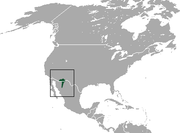
|
Size: Habitat: Forest and inland wetlands[101] Diet: |
LC
|
| Azumi shrew
|
S. hosonoi Imaizumi, 1954 |

|
Size: Habitat: Forest, shrubland, and grassland[102] Diet: |
LC
|
| Baird's shrew | S. bairdi Merriam, 1895 Two subspecies
|

|
Size: Habitat: Forest[103] Diet: VERIFY ME: Invertebrates[103] |
LC
|
| Barren ground shrew
|
S. ugyunak Anderson & Rand, 1945 |

|
Size: Habitat: Grassland[104] Diet: |
LC
|
| Buchara shrew | S. buchariensis Ognew, 1921 |

|
Size: Habitat: Forest[105] Diet: VERIFY ME: Insects, mostly beetles[105] |
DD
|
| Carmen Mountain shrew
|
S. milleri Jackson, 1947 |

|
Size: Habitat: Forest[106] Diet: VERIFY POSSIBLE FOOD: Insectivorous[106] |
VU
|
| Caucasian pygmy shrew | S. volnuchini Ognew, 1922 Two subspecies
|

|
Size: Habitat: Forest and grassland[107] Diet: |
LC
|
| Caucasian shrew
|
S. satunini Ognew, 1922 |

|
Size: Habitat: Forest and rocky areas[108] Diet: VERIFY ME: Other insects[108] |
LC
|
| Chestnut-bellied shrew
|
S. ventralis Merriam, 1895 |
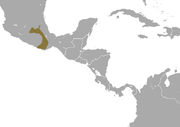
|
Size: Habitat: Forest and grassland[109] Diet: VERIFY POSSIBLE FOOD: Insectivorous[109] |
LC
|
| Chinese highland shrew
|
S. excelsus Allen, 1923 |

|
Size: Habitat: Forest, shrubland, and grassland[110] Diet: |
LC
|
| Chinese shrew
|
S. sinalis Thomas, 1912 |

|
Size: Habitat: Rocky areas[111] Diet: |
DD
|
| Cinereus shrew | S. cinereus Kerr, 1792 Eight subspecies
|

|
Size: UNKNOWN LENGTH SEEN: 0.2 to 0–0.2 cm (0 to 0–0 in)[112] Habitat: Forest, shrubland, grassland, and inland wetlands[113] Diet: VERIFY POSSIBLE FOOD: Insects[113]VERIFY ME: Invertebrates including insect larvae, ants, beetles, crickets, grasshoppers, spiders, harvestmen, centipedes, slugs, snails[112] |
LC
|
| Common shrew | S. araneus Linnaeus, 1758 |

|
Size: UNKNOWN LENGTH SEEN: [convert: invalid number][114] Habitat: Forest, shrubland, inland wetlands, and coastal marine[115] Diet: VERIFY ME: Vegetative matter (hausser et al[115]VERIFY POSSIBLE FOOD: Insects[114] |
LC
|
| Crowned shrew | S. coronatus Millet, 1828 |

|
Size: Habitat: Forest, shrubland, and inland wetlands[116] Diet: VERIFY POSSIBLE FOOD: Insectivores[116] |
LC
|
| Dneper common shrew
|
S. averini Zubko, 1937 |
Size: Habitat: Forest, shrubland, inland wetlands, and coastal marine[117] Diet: VERIFY ME: Vegetative matter (hausser et al[117] |
LC
| |
| Dwarf shrew
|
S. nanus Merriam, 1895 |
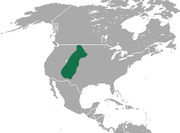
|
Size: Habitat: Rocky areas, inland wetlands, grassland, and forest[118] Diet: VERIFY ME: Insects, spiders, and other small invertebrates (worms, molluscs, centipedes, etc[118] |
LC
|
| Eurasian least shrew | S. minutissimus Zimmermann, 1780 |

|
Size: Habitat: Forest and grassland[119] Diet: VERIFY ME: Small insects, grubs, spiders and snails, consuming as much as 2-5 times its body weight over a 24 hour period (sulkava 1990, macdonald and barrett 1993)[119] |
LC
|
| Eurasian pygmy shrew | S. minutus Linnaeus, 1766 |

|
Size: VERIFY ME: 3–6 cm (1–2 in) long, plus 3–5 cm (1–2 in) tail[120] Habitat: Forest, shrubland, grassland, inland wetlands, and coastal marine[121] Diet: VERIFY ME: Invertebrates (hutterer 1990, 1999)[121]VERIFY POSSIBLE FOOD: Insects[120] |
LC
|
| Flat-skulled shrew
|
S. roboratus Hollister, 1913 |

|
Size: Habitat: Forest[122] Diet: VERIFY POSSIBLE FOOD: Insects[122] |
LC
|
| Fog shrew
|
S. sonomae Jackson, 1921 Two subspecies
|

|
Size: Habitat: Forest and inland wetlands[123] Diet: VERIFY ME: Insects but also consumes a large number of other small invertebrates[123] |
LC
|
| Gansu shrew
|
S. cansulus Thomas, 1912 |

|
Size: Habitat: Unknown[124] Diet: |
DD
|
| Glacier Bay water shrew
|
S. alaskanus Merriam, 1900 |
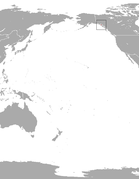
|
Size: Habitat: Inland wetlands[125] Diet: |
DD
|
| Greater stripe-backed shrew
|
S. cylindricauda Milne-Edwards, 1872 |

|
Size: Habitat: Forest[126] Diet: |
LC
|
| Iberian shrew | S. granarius Miller, 1910 |

|
Size: Habitat: Forest, shrubland, and rocky areas[127] Diet: |
LC
|
| Inyo shrew | S. tenellus Merriam, 1895 |

|
Size: Habitat: Forest, shrubland, inland wetlands, and rocky areas[128] Diet: VERIFY ME: Insects and other small invertebrates (worms, molluscs, centipedes, etc[128] |
LC
|
| Ixtlan shrew
|
S. ixtlanensis Carraway, 2007 |
Size: Habitat: Forest[129] Diet: |
DD
| |
| Jalisco shrew
|
S. mediopua Carraway, 2007 |
Size: Habitat: Forest[130] Diet: |
LC
| |
| Kamchatka shrew
|
S. camtschatica Yudin, 1972 |

|
Size: Habitat: Shrubland[131] Diet: |
LC
|
| Kashmir pygmy shrew
|
S. planiceps Miller, 1911 |

|
Size: Habitat: Forest and rocky areas[132] Diet: |
LC
|
| Kozlov's shrew
|
S. kozlovi Stroganov, 1952 |

|
Size: Habitat: Unknown[133] Diet: |
DD
|
| Large-toothed shrew
|
S. macrodon Merriam, 1895 |
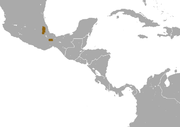
|
Size: Habitat: Forest[134] Diet: VERIFY POSSIBLE FOOD: Insectivorous[134] |
VU
|
| Laxmann's shrew | S. caecutiens Laxmann, 1788 |

|
Size: Habitat: Forest, shrubland, and inland wetlands[135] Diet: VERIFY ME: A wide range of insects, spiders, and centipedes (stone 1995)[135] |
LC
|
| Lesser striped shrew
|
S. bedfordiae Thomas, 1911 |

|
Size: Habitat: Forest and grassland[136] Diet: VERIFY POSSIBLE FOOD: Insects[136] |
LC
|
| Long-clawed shrew | S. unguiculatus Dobson, 1890 |
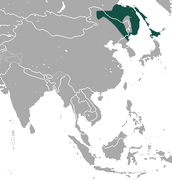
|
Size: Habitat: Forest and grassland[137] Diet: VERIFY ME: Earthworms, insects, centipedes and snails[137] |
LC
|
| Long-tailed shrew | S. dispar Batchelder, 1911 Two subspecies
|

|
Size: UNKNOWN LENGTH SEEN: [convert: invalid number][138] Habitat: Forest, inland wetlands, and rocky areas[139] Diet: VERIFY ME: Other shrews probably take long-tailed shrews, e[139]VERIFY POSSIBLE FOOD: Leaves[138] |
LC
|
| Maritime shrew
|
S. maritimensis Smith, 1939 |

|
Size: Habitat: Forest, inland wetlands, and unknown[140] Diet: |
LC
|
| Marsh shrew | S. bendirii Merriam, 1884 Three subspecies
|

|
Size: Habitat: Forest and inland wetlands[141] Diet: VERIFY POSSIBLE FOOD: Insects[141] |
LC
|
| Merriam's shrew | S. merriami Dobson, 1890 |

|
Size: VERIFY ME: [convert: needs a number] long, plus 3–5 cm (1–2 in) tail[142] Habitat: Forest, shrubland, and grassland[143] Diet: VERIFY ME: Lepidopteran caterpillars, beetles, cave crickets, ichneumon wasps, and spiders, as well as other arthropods (johnson and clanton 1954, cited in verts and carraway 1998; clark and stromberg 1987)[143]VERIFY POSSIBLE FOOD: Insects[142] |
LC
|
| Mexican long-tailed shrew
|
S. oreopolus Merriam, 1892 |

|
Size: Habitat: Forest and grassland[144] Diet: VERIFY POSSIBLE FOOD: Insectivorous[144] |
LC
|
| Montane shrew | S. monticolus Merriam, 1890 Fourteen subspecies
|

|
Size: UNKNOWN LENGTH SEEN: [convert: invalid number][145] Habitat: Forest, grassland, and inland wetlands[146] Diet: VERIFY ME: Large quantities of prey (findley, 1987)[145] |
LC
|
| Mount Lyell shrew
|
S. lyelli Merriam, 1902 |

|
Size: Habitat: Shrubland, grassland, and inland wetlands[147] Diet: VERIFY POSSIBLE FOOD: Insects[147] |
LC
|
| New Mexico shrew
|
S. neomexicanus Bailey, 1913 |
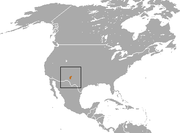
|
Size: Habitat: Forest and grassland[148] Diet: |
DD
|
| Orizaba long-tailed shrew
|
S. orizabae Merriam, 1895 |

|
Size: Habitat: Forest and grassland[149] Diet: |
LC
|
| Ornate shrew | S. ornatus Merriam, 1895 Eight subspecies
|

|
Size: Habitat: Forest, shrubland, grassland, and inland wetlands[150] Diet: |
LC
|
| Pacific shrew
|
S. pacificus Coues, 1877 Two subspecies
|

|
Size: UNKNOWN LENGTH SEEN: 150 to 914–150 cm (59 to 360–59 in)[151] Habitat: Forest[152] Diet: VERIFY ME: Insects but also consumes a large number of other small invertebrates, worms, molluscs, and centipedes[152]VERIFY POSSIBLE FOOD: Leaves[151] |
LC
|
| Paramushir shrew
|
S. leucogaster Kuroda, 1933 |

|
Size: Habitat: Shrubland[153] Diet: |
DD
|
| Portenko's shrew
|
S. portenkoi Stroganov, 1956 |

|
Size: Habitat: Grassland[154] Diet: |
DD
|
| Prairie shrew
|
S. haydeni Baird, 1857 |
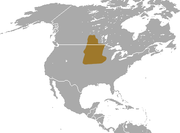
|
Size: Habitat: Forest, shrubland, grassland, and inland wetlands[155] Diet: VERIFY ME: Small vertebrates and some vegetable matter[155] |
LC
|
| Preble's shrew
|
S. preblei Jackson, 1922 |

|
Size: Habitat: Forest, shrubland, grassland, inland wetlands, and desert[156] Diet: VERIFY POSSIBLE FOOD: Insects[156] |
LC
|
| Pribilof Island shrew
|
S. pribilofensis Merriam, 1895 |
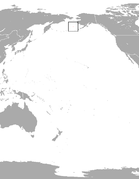
|
Size: Habitat: Grassland and coastal marine[157] Diet: |
EN
|
| Radde's shrew
|
S. raddei Satunin, 1895 |

|
Size: Habitat: Forest and rocky areas[158] Diet: VERIFY POSSIBLE FOOD: Insects[158] |
LC
|
| Saint Lawrence Island shrew
|
S. jacksoni Hall & Gilmore, 1932 |
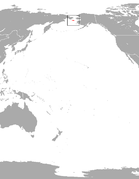
|
Size: Habitat: Grassland, inland wetlands, and rocky areas[159] Diet: VERIFY POSSIBLE FOOD: Insects[159] |
LC
|
| San Cristobal shrew
|
S. stizodon Merriam, 1895 |

|
Size: Habitat: Forest[160] Diet: |
CR
|
| Saussure's shrew
|
S. saussurei Merriam, 1892 Two subspecies
|

|
Size: Habitat: Forest[161] Diet: |
LC
|
| Sclater's shrew
|
S. sclateri Merriam, 1897 |

|
Size: Habitat: Forest[162] Diet: |
CR
|
| Shinto shrew
|
S. shinto Thomas, 1905 Three subspecies
|
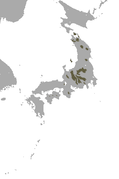
|
Size: Habitat: Forest and shrubland[163] Diet: |
LC
|
| Siberian large-toothed shrew
|
S. daphaenodon Thomas, 1907 Three subspecies
|

|
Size: Habitat: Inland wetlands and forest[164] Diet: VERIFY ME: Earthworms, spiders, millipedes, and insects (lepidoptera, orthoptera, crickets, diptera and a variety of beetles)[164] |
LC
|
| Slender shrew
|
S. gracillimus Thomas, 1907 Five subspecies
|

|
Size: Habitat: Forest and grassland[165] Diet: VERIFY ME: Invertebrates found in the surface litter and soil[165] |
LC
|
| Smoky shrew | S. fumeus Miller, 1895 Two subspecies
|

|
Size: UNKNOWN LENGTH SEEN: [convert: invalid number][166] Habitat: Forest and shrubland[167] Diet: VERIFY POSSIBLE FOOD: Insects[167]VERIFY POSSIBLE FOOD: Leaves[166] |
LC
|
| Southeastern shrew | S. longirostris Bachman, 1837 Three subspecies
|
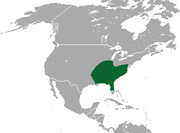
|
Size: VERIFY ME: [convert: needs a number] long, plus 2–4 cm (1–2 in) tail[168] Habitat: Inland wetlands, grassland, shrubland, and forest[169] Diet: VERIFY POSSIBLE FOOD: Leaves[168] |
LC
|
| Taiga shrew
|
S. isodon Turov, 1924 |

|
Size: Habitat: Forest and shrubland[170] Diet: |
LC
|
| Tibetan shrew
|
S. thibetanus Kaschtschenko, 1905 |

|
Size: Habitat: Forest, shrubland, and grassland[171] Diet: |
DD
|
| Tien Shan shrew
|
S. asper Thomas, 1914 |

|
Size: Habitat: Forest and shrubland[172] Diet: VERIFY ME: Diverse, but is predominately comprised of insects[172] |
LC
|
| Trowbridge's shrew | S. trowbridgii Baird, 1857 Five subspecies
|
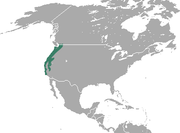
|
Size: Habitat: Forest, shrubland, and inland wetlands[173] Diet: VERIFY ME: Spiders, worms, and centipedes[173] |
LC
|
| Tundra shrew | S. tundrensis Merriam, 1900 |

|
Size: VERIFY ME: 8–12 cm (3–5 in) long, plus 2–4 cm (1–2 in) tail[174] Habitat: Forest, grassland, and inland wetlands[175] Diet: VERIFY ME: Almost continually to fuel their high metabolic rates[174] |
LC
|
| Ussuri shrew
|
S. mirabilis Ognew, 1937 |

|
Size: Habitat: Forest[176] Diet: |
DD
|
| Vagrant shrew | S. vagrans Baird, 1857 Three subspecies
|

|
Size: Habitat: Forest and inland wetlands[177] Diet: VERIFY ME: Forest insects (eggs, larvae, pupae, and adults), slugs, earthworms, and other invertebrates[177] |
LC
|
| Valais shrew | S. antinorii Bonaparte, 1840 |

|
Size: Habitat: Inland wetlands[178] Diet: |
LC
|
| Veracruz shrew
|
S. veraecrucis Jackson, 1925 Three subspecies
|

|
Size: Habitat: Forest[179] Diet: |
LC
|
| Verapaz shrew
|
S. veraepacis Alston, 1877 Three subspecies
|

|
Size: Habitat: Forest[180] Diet: |
LC
|
| Zacatecas shrew
|
S. emarginatus Jackson, 1925 |

|
Size: Habitat: Forest[181] Diet: VERIFY POSSIBLE FOOD: Insectivorous[181] |
LC
|
| Common name | Scientific name and subspecies | Range | Size and ecology | IUCN status and estimated population |
|---|---|---|---|---|
| Himalayan shrew | S. nigrescens (Gray, 1842) Two subspecies
|

|
Size: Habitat: Forest, shrubland, and rocky areas[182] Diet: |
LC
|
References[edit]
- ^ a b Molur, S. (2016). "Anourosorex assamensis". IUCN Red List of Threatened Species. 2016: e.T136802A22311877. doi:10.2305/IUCN.UK.2016-2.RLTS.T136802A22311877.en.
- ^ a b Friesen, Jarrett (2017). "Anourosorex squamipes". Animal Diversity Web. University of Michigan. Retrieved March 30, 2024.
- ^ a b Molur, S. (2017) [errata version of 2016 assessment]. "Anourosorex squamipes". IUCN Red List of Threatened Species. 2016: e.T41450A115186957. doi:10.2305/IUCN.UK.2016-3.RLTS.T41450A22311769.en.
- ^ a b Molur, S. (2017) [errata version of 2016 assessment]. "Anourosorex schmidi". IUCN Red List of Threatened Species. 2016: e.T136589A115210155. doi:10.2305/IUCN.UK.2016-3.RLTS.T136589A22312034.en.
- ^ a b Smith, A. T. (2016). "Anourosorex yamashinai". IUCN Red List of Threatened Species. 2016: e.T136257A22311945. doi:10.2305/IUCN.UK.2016-1.RLTS.T136257A22311945.en.
- ^ a b Begnoche, Dana (2011). "Blarina hylophaga". Animal Diversity Web. University of Michigan. Retrieved March 30, 2024.
- ^ a b c Cassola, F. (2017) [errata version of 2016 assessment]. "Blarina hylophaga". IUCN Red List of Threatened Species. 2016: e.T41453A115187348. doi:10.2305/IUCN.UK.2016-3.RLTS.T41453A22292879.en.
- ^ a b Ballenger, Liz (2011). "Blarina brevicauda". Animal Diversity Web. University of Michigan. Retrieved March 30, 2024.
- ^ a b c Cassola, F. (2017) [errata version of 2016 assessment]. "Blarina brevicauda". IUCN Red List of Threatened Species. 2016: e.T41451A115187102. doi:10.2305/IUCN.UK.2016-3.RLTS.T41451A22292945.en.
- ^ a b Foust, Desirae (2011). "Blarina carolinensis". Animal Diversity Web. University of Michigan. Retrieved March 30, 2024.
- ^ a b c Cassola, F. (2017) [errata version of 2016 assessment]. "Blarina carolinensis". IUCN Red List of Threatened Species. 2016: e.T41452A115187223. doi:10.2305/IUCN.UK.2016-3.RLTS.T41452A22293016.en.
- ^ a b Johnston, C.; Smith, A. T. (2016). "Blarinella quadraticauda". IUCN Red List of Threatened Species. 2016: e.T40613A22283477. doi:10.2305/IUCN.UK.2016-1.RLTS.T40613A22283477.en.
- ^ a b Cassola, F. (2016). "Blarinella wardi". IUCN Red List of Threatened Species. 2016: e.T2825A22283369. doi:10.2305/IUCN.UK.2016-2.RLTS.T2825A22283369.en.
- ^ a b Chiozza, F. (2016). "Blarinella griselda". IUCN Red List of Threatened Species. 2016: e.T136365A22283251. doi:10.2305/IUCN.UK.2016-2.RLTS.T136365A22283251.en.
- ^ a b c Chiozza, F. (2016). "Chimarrogale phaeura". IUCN Red List of Threatened Species. 2016: e.T4648A22281839. doi:10.2305/IUCN.UK.2016-2.RLTS.T4648A22281839.en.
- ^ a b Cassola, F. (2017) [errata version of 2016 assessment]. "Chimarrogale styani". IUCN Red List of Threatened Species. 2016: e.T40616A115175620. doi:10.2305/IUCN.UK.2016-3.RLTS.T40616A22282363.en.
- ^ a b Solmundson, Kirsten (2017). "Chimarrogale himalayica". Animal Diversity Web. University of Michigan. Retrieved March 30, 2024.
- ^ a b Molur, S. (2017) [errata version of 2016 assessment]. "Chimarrogale himalayica". IUCN Red List of Threatened Species. 2016: e.T40614A115175470. doi:10.2305/IUCN.UK.2016-3.RLTS.T40614A22282178.en.
- ^ a b Cassola, F. (2016). "Chimarrogale platycephalus". IUCN Red List of Threatened Species. 2016: e.T40615A22282290. doi:10.2305/IUCN.UK.2016-2.RLTS.T40615A22282290.en.
- ^ a b Gerrie, R.; Kennerley, R. (2018). "Chimarrogale hantu". IUCN Red List of Threatened Species. 2018: e.T4647A22281948. doi:10.2305/IUCN.UK.2018-1.RLTS.T4647A22281948.en.
- ^ a b c Chiozza, F. (2016). "Chimarrogale sumatrana". IUCN Red List of Threatened Species. 2016: e.T4649A22282082. doi:10.2305/IUCN.UK.2016-2.RLTS.T4649A22282082.en.
- ^ a b Smith, A. T.; Johnston, C. H. (2017) [errata version of 2016 assessment]. "Chodsigoa hypsibia". IUCN Red List of Threatened Species. 2016: e.T41430A115186270. doi:10.2305/IUCN.UK.2016-3.RLTS.T41430A22292022.en.
- ^ a b Johnston, C.; Smith, A. T. (2016). "Chodsigoa lamula". IUCN Red List of Threatened Species. 2016: e.T41431A22291928. doi:10.2305/IUCN.UK.2016-1.RLTS.T41431A22291928.en.
- ^ a b Johnston, C.; Smith, A. T. (2016). "Chodsigoa sodalis". IUCN Red List of Threatened Species. 2016: e.T136760A22292577. doi:10.2305/IUCN.UK.2016-1.RLTS.T136760A22292577.en.
- ^ a b c Chiozza, F. (2017) [errata version of 2016 assessment]. "Chodsigoa parca". IUCN Red List of Threatened Species. 2016: e.T41435A115186683. doi:10.2305/IUCN.UK.2016-3.RLTS.T41435A22292325.en.
- ^ a b Johnston, C.; Smith, A. T. (2016). "Chodsigoa parva". IUCN Red List of Threatened Species. 2016: e.T136298A22292242. doi:10.2305/IUCN.UK.2016-1.RLTS.T136298A22292242.en.
- ^ a b Johnston, C.; Smith, A. T. (2016). "Chodsigoa salenskii". IUCN Red List of Threatened Species. 2016: e.T20416A22292138. doi:10.2305/IUCN.UK.2016-1.RLTS.T20416A22292138.en.
- ^ a b Johnston, C.; Smith, A. T. (2016). "Chodsigoa smithii". IUCN Red List of Threatened Species. 2016: e.T41436A22292443. doi:10.2305/IUCN.UK.2016-2.RLTS.T41436A22292443.en.
- ^ a b Kennerley, R.; Laginha Pinto Correia, D. (2016). "Chodsigoa caovansunga". IUCN Red List of Threatened Species. 2016: e.T136259A22292658. doi:10.2305/IUCN.UK.2016-1.RLTS.T136259A22292658.en.
- ^ a b Cuarón, A. D.; de Grammont, P. C. (2018). "Cryptotis magna". IUCN Red List of Threatened Species. 2018: e.T5766A22285160. doi:10.2305/IUCN.UK.2018-2.RLTS.T5766A22285160.en.
- ^ a b Naylor, L.; Roach, N. (2016). "Cryptotis nigrescens". IUCN Red List of Threatened Species. 2016: e.T41376A22285913. doi:10.2305/IUCN.UK.2016-2.RLTS.T41376A22285913.en.
- ^ a b Roach, N.; Naylor, L. (2020) [amended version of 2019 assessment]. "Cryptotis niausa". IUCN Red List of Threatened Species. 2020: e.T96829156A164136736. doi:10.2305/IUCN.UK.2020-1.RLTS.T96829156A164136736.en.
- ^ a b Roach, N.; Naylor, L. (2019). "Cryptotis celaque". IUCN Red List of Threatened Species. 2019: e.T96828906A96829039. doi:10.2305/IUCN.UK.2019-1.RLTS.T96828906A96829039.en.
- ^ a b Woodman, N. (2019). "Cryptotis orophila". IUCN Red List of Threatened Species. 2019: e.T136838A22283605. doi:10.2305/IUCN.UK.2019-3.RLTS.T136838A22283605.en.
- ^ a b c Woodman, N.; Matson, J.; Cuarón, A. D.; de Grammont, P. C. (2019). "Cryptotis alticola". IUCN Red List of Threatened Species. 2019: e.T136789A22284844. doi:10.2305/IUCN.UK.2019-3.RLTS.T136789A22284844.en.
- ^ a b Woodman, N. (2017). "Cryptotis colombiana". IUCN Red List of Threatened Species. 2017: e.T136795A22284247. doi:10.2305/IUCN.UK.2017-2.RLTS.T136795A22284247.en.
- ^ a b Samudio Jr, R. S. (2018). "Cryptotis merus". IUCN Red List of Threatened Species. 2018: e.T136299A22283802. doi:10.2305/IUCN.UK.2018-1.RLTS.T136299A22283802.en.
- ^ a b Quiroga-Carmona, M. (2019). "Cryptotis dinirensis". IUCN Red List of Threatened Species. 2019: e.T114956336A114956339. doi:10.2305/IUCN.UK.2019-3.RLTS.T114956336A114956339.en.
- ^ a b Woodman, N. (2019). "Cryptotis brachyonyx". IUCN Red List of Threatened Species. 2019: e.T136736A22284318. doi:10.2305/IUCN.UK.2019-1.RLTS.T136736A22284318.en.
- ^ a b Woodman, N. (2016). "Cryptotis equatoris". IUCN Red List of Threatened Species. 2016: e.T136438A22283978. doi:10.2305/IUCN.UK.2016-2.RLTS.T136438A22283978.en.
- ^ a b Naylor, L.; Roach, N. (2018). "Cryptotis endersi". IUCN Red List of Threatened Species. 2018: e.T5763A22285253. doi:10.2305/IUCN.UK.2018-1.RLTS.T5763A22285253.en.
- ^ a b Cassola, F. (2016). "Cryptotis goldmani". IUCN Red List of Threatened Species. 2016: e.T41371A22285527. doi:10.2305/IUCN.UK.2016-2.RLTS.T41371A22285527.en.
- ^ a b Cuarón, A. D.; de Grammont, P. C. (2018) [errata version of 2017 assessment]. "Cryptotis goodwini". IUCN Red List of Threatened Species. 2017: e.T48269679A123794650. doi:10.2305/IUCN.UK.2017-3.RLTS.T48269679A22285741.en.
- ^ a b c Roach, N.; Naylor, L. (2016). "Cryptotis obscura". IUCN Red List of Threatened Species. 2016: e.T136462A22286153. doi:10.2305/IUCN.UK.2016-3.RLTS.T136462A22286153.en.
- ^ a b c Roach, N.; Naylor, L. (2018) [errata version of 2017 assessment]. "Cryptotis griseoventris". IUCN Red List of Threatened Species. 2017: e.T48269619A123794519. doi:10.2305/IUCN.UK.2017-3.RLTS.T48269619A22284142.en.
- ^ a b Matson, J. (2019). "Cryptotis hondurensis". IUCN Red List of Threatened Species. 2019: e.T5765A22285078. doi:10.2305/IUCN.UK.2019-1.RLTS.T5765A22285078.en.
- ^ a b Roach, N.; Naylor, L. (2017). "Cryptotis mam". IUCN Red List of Threatened Species. 2017: e.T48269568A48269572. doi:10.2305/IUCN.UK.2017-3.RLTS.T48269568A48269572.en.
- ^ Cite error: The named reference
IUCNCryptotismamwas invoked but never defined (see the help page). - ^ a b Naylor, L.; Roach, N. (2016). "Cryptotis medellinia". IUCN Red List of Threatened Species. 2016: e.T136267A22285456. doi:10.2305/IUCN.UK.2016-2.RLTS.T136267A22285456.en.
- ^ a b Potter, Ashley (2011). "Cryptotis meridensis". Animal Diversity Web. University of Michigan. Retrieved March 30, 2024.
- ^ a b c Quiroga-Carmona, M.; Cassola, F. (2018) [errata version of 2017 assessment]. "Cryptotis meridensis". IUCN Red List of Threatened Species. 2017: e.T48268560A123794398. doi:10.2305/IUCN.UK.2017-3.RLTS.T48268560A22285992.en.
- ^ a b Woodman, N.; Matson, J.; Cuarón, A. D.; de Grammont, P. C. (2017) [errata version of 2016 assessment]. "Cryptotis merriami". IUCN Red List of Threatened Species. 2016: e.T136398A115207240. doi:10.2305/IUCN.UK.2016-3.RLTS.T136398A22285651.en.
- ^ a b Cassola, F. (2016). "Cryptotis mexicana". IUCN Red List of Threatened Species. 2016: e.T41374A22286065. doi:10.2305/IUCN.UK.2016-2.RLTS.T41374A22286065.en.
- ^ a b Roach, N.; Naylor, L. (2017). "Cryptotis lacertosus". IUCN Red List of Threatened Species. 2017: e.T48269646A48269651. doi:10.2305/IUCN.UK.2017-3.RLTS.T48269646A48269651.en.
- ^ a b c Matson, J.; Cuarón, A. D.; de Grammont, P. C. (2018). "Cryptotis nelsoni". IUCN Red List of Threatened Species. 2018: e.T136389A22284939. doi:10.2305/IUCN.UK.2018-2.RLTS.T136389A22284939.en.
- ^ a b Ohl, Adam; Kent, Catherine (2012). "Cryptotis parva". Animal Diversity Web. University of Michigan. Retrieved March 30, 2024.
- ^ a b c Woodman, N.; Matson, J.; Cuarón, A. D.; de Grammont, P. C. (2017) [errata version of 2016 assessment]. "Cryptotis parva". IUCN Red List of Threatened Species. 2016: e.T41377A115182514. doi:10.2305/IUCN.UK.2016-3.RLTS.T41377A22284502.en.
- ^ a b c Álvarez-Castañeda, S. T.; Cuarón, A. D.; de Grammont, P. C. (2016). "Cryptotis peregrina". IUCN Red List of Threatened Species. 2016: e.T136550A22284600. doi:10.2305/IUCN.UK.2016-3.RLTS.T136550A22284600.en.
- ^ a b Roach, N.; Naylor, L. (2019). "Cryptotis mccarthyi". IUCN Red List of Threatened Species. 2019: e.T96829093A96829102. doi:10.2305/IUCN.UK.2019-1.RLTS.T96829093A96829102.en.
- ^ a b Quiroga-Carmona, M.; Woodman, N. (2019). "Cryptotis perijensis". IUCN Red List of Threatened Species. 2019: e.T91356351A91356359. doi:10.2305/IUCN.UK.2019-1.RLTS.T91356351A91356359.en.
- ^ a b Woodman, N.; Quiroga-Carmona, M. (2019). "Cryptotis peruviensis". IUCN Red List of Threatened Species. 2019: e.T136734A22284052. doi:10.2305/IUCN.UK.2019-1.RLTS.T136734A22284052.en.
- ^ a b c Álvarez-Castañeda, S. T.; Cuarón, A. D.; de Grammont, P. C. (2018). "Cryptotis phillipsii". IUCN Red List of Threatened Species. 2018: e.T136639A22283893. doi:10.2305/IUCN.UK.2018-1.RLTS.T136639A22283893.en.
- ^ a b Roach, N.; Naylor, L. (2019). "Cryptotis cavatorculus". IUCN Red List of Threatened Species. 2019: e.T96829126A96829129. doi:10.2305/IUCN.UK.2019-1.RLTS.T96829126A96829129.en.
- ^ a b Naylor, L.; Roach, N. (2016). "Cryptotis squamipes". IUCN Red List of Threatened Species. 2016: e.T41378A22284402. doi:10.2305/IUCN.UK.2016-2.RLTS.T41378A22284402.en.
- ^ a b Quiroga-Carmona, M. (2019). "Cryptotis aroensis". IUCN Red List of Threatened Species. 2019: e.T45954361A45973031. doi:10.2305/IUCN.UK.2019-1.RLTS.T45954361A45973031.en.
- ^ a b Matson, J. (2020). "Cryptotis gracilis". IUCN Red List of Threatened Species. 2020: e.T5764A22285369. doi:10.2305/IUCN.UK.2020-3.RLTS.T5764A22285369.en.
- ^ a b Woodman, N.; Quiroga-Carmona, M. (2018) [amended version of 2017 assessment]. "Cryptotis tamensis". IUCN Red List of Threatened Species. 2018: e.T136780A126907401. doi:10.2305/IUCN.UK.2018-1.RLTS.T136780A126907401.en.
- ^ a b Naylor, L.; Roach, N.; Quiroga-Carmona, M. (2018) [amended version of 2016 assessment]. "Cryptotis thomasi". IUCN Red List of Threatened Species. 2018: e.T41379A126907773. doi:10.2305/IUCN.UK.2018-1.RLTS.T41379A126907773.en.
- ^ a b Woodman, N. (2019). "Cryptotis tropicalis". IUCN Red List of Threatened Species. 2019: e.T136757A22286227. doi:10.2305/IUCN.UK.2019-3.RLTS.T136757A22286227.en.
- ^ a b Quiroga-Carmona, M.; Roach, N. (2017). "Cryptotis venezuelensis". IUCN Red List of Threatened Species. 2017: e.T48267978A78324738. doi:10.2305/IUCN.UK.2017-3.RLTS.T48267978A78324738.en.
- ^ a b c Naylor, L.; Roach, N. (2016). "Cryptotis montivaga". IUCN Red List of Threatened Species. 2016: e.T41375A22285849. doi:10.2305/IUCN.UK.2016-2.RLTS.T41375A22285849.en.
- ^ a b Engelbrektsson, P. (2020) [amended version of 2019 assessment]. "Cryptotis oreoryctes". IUCN Red List of Threatened Species. 2020: e.T45954370A166602236. doi:10.2305/IUCN.UK.2020-1.RLTS.T45954370A166602236.en.
- ^ a b Cuarón, A. D.; de Grammont, P. C.; Woodman, N.; Matson, J. (2016). "Cryptotis mayensis". IUCN Red List of Threatened Species. 2016: e.T136488A22284758. doi:10.2305/IUCN.UK.2016-2.RLTS.T136488A22284758.en.
- ^ a b Molur, S. (2016). "Episoriculus caudatus". IUCN Red List of Threatened Species. 2016: e.T41428A22293617. doi:10.2305/IUCN.UK.2016-2.RLTS.T41428A22293617.en.
- ^ a b c Molur, S. (2017) [errata version of 2016 assessment]. "Episoriculus leucops". IUCN Red List of Threatened Species. 2016: e.T41432A115186422. doi:10.2305/IUCN.UK.2016-3.RLTS.T41432A22293434.en.
- ^ a b Molur, S. (2017) [errata version of 2016 assessment]. "Episoriculus macrurus". IUCN Red List of Threatened Species. 2016: e.T41433A115186554. doi:10.2305/IUCN.UK.2016-3.RLTS.T41433A22293708.en.
- ^ a b Smith, A. T. (2016). "Episoriculus fumidus". IUCN Red List of Threatened Species. 2016: e.T41429A22293526. doi:10.2305/IUCN.UK.2016-2.RLTS.T41429A22293526.en.
- ^ a b Woodman, N.; Álvarez Castañeda, S. T.; Castro-Arellano, I.; de Grammont, P. C. (2016). "Megasorex gigas". IUCN Red List of Threatened Species. 2016: e.T41454A22319710. doi:10.2305/IUCN.UK.2016-2.RLTS.T41454A22319710.en.
- ^ a b Jain, Divya (2002). "Nectogale elegans". Animal Diversity Web. University of Michigan. Retrieved March 30, 2024.
- ^ a b Molur, S. (2016). "Nectogale elegans". IUCN Red List of Threatened Species. 2016: e.T41455A22319497. doi:10.2305/IUCN.UK.2016-2.RLTS.T41455A22319497.en.
- ^ a b Fahey, Bridget (2024). "Neomys fodiens". Animal Diversity Web. University of Michigan. Retrieved March 30, 2024.
- ^ a b c Hutterer, R.; Meinig, H.; Bertolino, S.; Kryštufek, B.; Sheftel, B.; Stubbe, M.; Samiya, R.; Ariunbold, J.; Buuveibaatar, V.; Dorjderem, S.; Monkhzul, Ts.; Otgonbaatar, M.; Tsogbadrakh, M. (2017) [errata version of 2016 assessment]. "Neomys fodiens". IUCN Red List of Threatened Species. 2016: e.T29658A115170106. doi:10.2305/IUCN.UK.2016-3.RLTS.T29658A22282586.en.
- ^ a b Hutterer, R.; Kryštufek, B.; Yigit, N.; Mitsainas, G.; Meinig, H.; Bertolino, S.; Palomo, L. (2021) [amended version of 2016 assessment]. "Neomys anomalus". IUCN Red List of Threatened Species. 2021: e.T29657A197521634. doi:10.2305/IUCN.UK.2021-1.RLTS.T29657A197521634.en.
- ^ a b Gazzard, A.; Meinig, H. (2023). "Neomys milleri". IUCN Red List of Threatened Species. 2023: e.T221738646A221738688. doi:10.2305/IUCN.UK.2023-1.RLTS.T221738646A221738688.en.
- ^ a b c Kryštufek, B.; Bukhnikashvili, A. (2016). "Neomys teres". IUCN Red List of Threatened Species. 2016: e.T29659A22282493. doi:10.2305/IUCN.UK.2016-2.RLTS.T29659A22282493.en.
- ^ a b Allen, David (2000). "Notiosorex crawfordi". Animal Diversity Web. University of Michigan. Retrieved March 30, 2024.
- ^ a b Timm, R.; Matson, J.; Woodman, N.; Castro-Arellano, I. (2017) [errata version of 2016 assessment]. "Notiosorex crawfordi". IUCN Red List of Threatened Species. 2016: e.T41456A115187458. doi:10.2305/IUCN.UK.2016-3.RLTS.T41456A22293173.en.
- ^ a b Castro-Arellano, I.; Timm, R.; Matson, J.; Woodman, N. (2017) [errata version of 2016 assessment]. "Notiosorex evotis". IUCN Red List of Threatened Species. 2016: e.T136273A115205277. doi:10.2305/IUCN.UK.2016-3.RLTS.T136273A22293285.en.
- ^ a b c Timm, R.; Matson, J.; Woodman, N.; de Grammont, P. C.; Castro-Arellano, I. (2017). "Notiosorex cockrumi". IUCN Red List of Threatened Species. 2017: e.T136666A22293361. doi:10.2305/IUCN.UK.2017-2.RLTS.T136666A22293361.en.
- ^ a b Timm, R.; Matson, J. (2018). "Notiosorex villai". IUCN Red List of Threatened Species. 2018: e.T136688A22293097. doi:10.2305/IUCN.UK.2018-1.RLTS.T136688A22293097.en.
- ^ a b Cassola, F. (2017). "Sorex yukonicus". IUCN Red List of Threatened Species. 2017: e.T136542A22315082. doi:10.2305/IUCN.UK.2017-2.RLTS.T136542A22315082.en.
- ^ a b Burke, Felicity (2011). "Sorex alpinus". Animal Diversity Web. University of Michigan. Retrieved March 30, 2024.
- ^ a b c Meinig, H.; Bertolino, S.; zima, j. (2020). "Sorex alpinus". IUCN Red List of Threatened Species. 2020: e.T29660A114024313. doi:10.2305/IUCN.UK.2020-2.RLTS.T29660A114024313.en.
- ^ a b Wund, Matthew (2000). "Sorex hoyi". Animal Diversity Web. University of Michigan. Retrieved March 30, 2024.
- ^ a b Cassola, F. (2017) [errata version of 2016 assessment]. "Sorex hoyi". IUCN Red List of Threatened Species. 2016: e.T41400A115183871. doi:10.2305/IUCN.UK.2016-3.RLTS.T41400A22312472.en.
- ^ a b Carmen, Ma (2001). "Sorex palustris". Animal Diversity Web. University of Michigan. Retrieved March 30, 2024.
- ^ a b c Cassola, F. (2017) [errata version of 2016 assessment]. "Sorex palustris". IUCN Red List of Threatened Species. 2016: e.T41410A115184897. doi:10.2305/IUCN.UK.2016-3.RLTS.T41410A22317955.en.
- ^ a b Amori, G. (2016). "Sorex samniticus". IUCN Red List of Threatened Species. 2016: e.T20411A2772233. doi:10.2305/IUCN.UK.2016-3.RLTS.T20411A2772233.en.
- ^ a b Seto, Stephanie (2006). "Sorex arcticus". Animal Diversity Web. University of Michigan. Retrieved March 30, 2024.
- ^ a b c Cassola, F. (2017) [errata version of 2016 assessment]. "Sorex arcticus". IUCN Red List of Threatened Species. 2016: e.T41385A115182930. doi:10.2305/IUCN.UK.2016-3.RLTS.T41385A22314320.en.
- ^ a b Woodman, N.; Matson, J.; Castro-Arellano, I. (2017) [errata version of 2016 assessment]. "Sorex arizonae". IUCN Red List of Threatened Species. 2016: e.T20396A115158374. doi:10.2305/IUCN.UK.2016-3.RLTS.T20396A22316164.en.
- ^ a b Laginha Pinto Correia, D. (2016). "Sorex hosonoi". IUCN Red List of Threatened Species. 2016: e.T20386A22315765. doi:10.2305/IUCN.UK.2016-1.RLTS.T20386A22315765.en.
- ^ a b c Cassola, F. (2016). "Sorex bairdi". IUCN Red List of Threatened Species. 2016: e.T41387A22314464. doi:10.2305/IUCN.UK.2016-2.RLTS.T41387A22314464.en.
- ^ a b Cassola, F. (2017) [errata version of 2016 assessment]. "Sorex ugyunak". IUCN Red List of Threatened Species. 2016: e.T41423A115185865. doi:10.2305/IUCN.UK.2016-3.RLTS.T41423A22318262.en.
- ^ a b c Cassola, F. (2019). "Sorex buchariensis". IUCN Red List of Threatened Species. 2019: e.T41390A22313860. doi:10.2305/IUCN.UK.2019-1.RLTS.T41390A22313860.en.
- ^ a b c Matson, J.; de Grammont, P. C. (2018). "Sorex milleri". IUCN Red List of Threatened Species. 2018: e.T20397A22316066. doi:10.2305/IUCN.UK.2018-1.RLTS.T20397A22316066.en.
- ^ a b Kryštufek, B. (2016). "Sorex volnuchini". IUCN Red List of Threatened Species. 2016: e.T29670A22315976. doi:10.2305/IUCN.UK.2016-2.RLTS.T29670A22315976.en.
- ^ a b c Bukhnikashvili, A.; Kryštufek, B. (2017) [errata version of 2016 assessment]. "Sorex satunini". IUCN Red List of Threatened Species. 2016: e.T41415A115185455. doi:10.2305/IUCN.UK.2016-3.RLTS.T41415A22317386.en.
- ^ a b c Matson, J.; Woodman, N.; Castro-Arellano, I.; de Grammont, P. C. (2017). "Sorex ventralis". IUCN Red List of Threatened Species. 2017: e.T41426A22315839. doi:10.2305/IUCN.UK.2017-2.RLTS.T41426A22315839.en.
- ^ a b Molur, S. (2016). "Sorex excelsus". IUCN Red List of Threatened Species. 2016: e.T20385A22315900. doi:10.2305/IUCN.UK.2016-2.RLTS.T20385A22315900.en.
- ^ a b Johnston, C.; Smith, A. T. (2016). "Sorex sinalis". IUCN Red List of Threatened Species. 2016: e.T20389A22314971. doi:10.2305/IUCN.UK.2016-1.RLTS.T20389A22314971.en.
- ^ a b Lee, Wendy (2001). "Sorex cinereus". Animal Diversity Web. University of Michigan. Retrieved March 30, 2024.
- ^ a b c Cassola, F. (2017) [errata version of 2016 assessment]. "Sorex cinereus". IUCN Red List of Threatened Species. 2016: e.T41392A115183208. doi:10.2305/IUCN.UK.2016-3.RLTS.T41392A22314055.en.
- ^ a b Taylor, Meghan (2002). "Sorex araneus". Animal Diversity Web. University of Michigan. Retrieved March 30, 2024.
- ^ a b c Hutterer, R.; Kryštufek, B. (2017) [errata version of 2016 assessment]. "Sorex araneus". IUCN Red List of Threatened Species. 2016: e.T29661A115170489. doi:10.2305/IUCN.UK.2016-3.RLTS.T29661A22315145.en.
- ^ a b c Meinig, H.; Aulagnier, S. (2016). "Sorex coronatus". IUCN Red List of Threatened Species. 2016: e.T29663A2792030. doi:10.2305/IUCN.UK.2016-3.RLTS.T29663A2792030.en.
- ^ a b c Hutterer, R.; Kryštufek, B. (2017) [errata version of 2016 assessment]. "Sorex araneus". IUCN Red List of Threatened Species. 2016: e.T29661A115170489. doi:10.2305/IUCN.UK.2016-3.RLTS.T29661A22315145.en.
- ^ a b c Cassola, F. (2017) [errata version of 2016 assessment]. "Sorex nanus". IUCN Red List of Threatened Species. 2016: e.T41406A115184594. doi:10.2305/IUCN.UK.2016-3.RLTS.T41406A22313099.en.
- ^ a b c Henttonen, H.; Sheftel, B.; Stubbe, M.; Samiya, R.; Ariunbold, J.; Buuveibaatar, V.; Dorjderem, S.; Monkhzul, Ts.; Otgonbaatar, M.; Tsogbadrakh, M. (2017) [errata version of 2016 assessment]. "Sorex minutissimus". IUCN Red List of Threatened Species. 2016: e.T29666A115171049. doi:10.2305/IUCN.UK.2016-3.RLTS.T29666A22316786.en.
- ^ a b Mutchler, Serenity (2011). "Sorex minutus". Animal Diversity Web. University of Michigan. Retrieved March 30, 2024.
- ^ a b c Hutterer, R.; Kryštufek, B.; Fernandes, M.; Meinig, H. (2017) [errata version of 2016 assessment]. "Sorex minutus". IUCN Red List of Threatened Species. 2016: e.T29667A115171222. doi:10.2305/IUCN.UK.2016-3.RLTS.T29667A22316362.en.
- ^ a b c Stubbe, M.; Samiya, R.; Ariunbold, J.; Buuveibaatar, V.; Dorjderem, S.; Monkhzul, Ts.; Otgonbaatar, M.; Tsogbadrakh, M.; Gankhuyag. (2017) [errata version of 2016 assessment]. "Sorex roboratus". IUCN Red List of Threatened Species. 2016: e.T41414A115185312. doi:10.2305/IUCN.UK.2016-3.RLTS.T41414A22317480.en.
- ^ a b c Cassola, F. (2017). "Sorex sonomae". IUCN Red List of Threatened Species. 2017: e.T41418A22318770. doi:10.2305/IUCN.UK.2017-2.RLTS.T41418A22318770.en.
- ^ a b Johnston, C.; Smith, A. T. (2016). "Sorex cansulus". IUCN Red List of Threatened Species. 2016: e.T20383A22318966. doi:10.2305/IUCN.UK.2016-1.RLTS.T20383A22318966.en.
- ^ a b Matson, J.; Reid, F.; Woodman, N. (2019). "Sorex alaskanus". IUCN Red List of Threatened Species. 2019: e.T41384A22313779. doi:10.2305/IUCN.UK.2019-2.RLTS.T41384A22313779.en.
- ^ a b Smith, A. T.; Johnston, C. H. (2017). "Sorex cylindricauda". IUCN Red List of Threatened Species. 2017: e.T20384A22319064. doi:10.2305/IUCN.UK.2017-2.RLTS.T20384A22319064.en.
- ^ a b Cassola, F. (2019). "Sorex granarius". IUCN Red List of Threatened Species. 2019: e.T29664A2792173. doi:10.2305/IUCN.UK.2019-1.RLTS.T29664A2792173.en.
- ^ a b c Cassola, F. (2016). "Sorex tenellus". IUCN Red List of Threatened Species. 2016: e.T41419A22318690. doi:10.2305/IUCN.UK.2016-2.RLTS.T41419A22318690.en.
- ^ a b Matson, J.; Woodman, N.; Castro-Arellano, I.; de Grammont, P. C. (2019). "Sorex ixtlanensis". IUCN Red List of Threatened Species. 2019: e.T136339A22319335. doi:10.2305/IUCN.UK.2019-3.RLTS.T136339A22319335.en.
- ^ a b Matson, J.; Woodman, N.; Castro-Arellano, I.; de Grammont, P. C. (2017). "Sorex mediopua". IUCN Red List of Threatened Species. 2017: e.T136656A22318332. doi:10.2305/IUCN.UK.2017-2.RLTS.T136656A22318332.en.
- ^ a b Tsytsulina, K. (2017). "Sorex camtschatica". IUCN Red List of Threatened Species. 2017: e.T41391A22314133. doi:10.2305/IUCN.UK.2017-2.RLTS.T41391A22314133.en.
- ^ a b Molur, S.; Nameer, P. O. (2017). "Sorex planiceps". IUCN Red List of Threatened Species. 2017: e.T41411A22317857. doi:10.2305/IUCN.UK.2017-2.RLTS.T41411A22317857.en.
- ^ a b Johnston, C.; Smith, A. T. (2016). "Sorex kozlovi". IUCN Red List of Threatened Species. 2016: e.T20387A22315588. doi:10.2305/IUCN.UK.2016-1.RLTS.T20387A22315588.en.
- ^ a b c de Grammont, P. C.; Matson, J. (2018). "Sorex macrodon". IUCN Red List of Threatened Species. 2018: e.T20392A22314529. doi:10.2305/IUCN.UK.2018-2.RLTS.T20392A22314529.en.
- ^ a b c Henttonen, H.; Sheftel, B.; Ariunbold, J. (2016). "Sorex caecutiens". IUCN Red List of Threatened Species. 2016: e.T29662A22314809. doi:10.2305/IUCN.UK.2016-2.RLTS.T29662A22314809.en.
- ^ a b c Cassola, F. (2017). "Sorex bedfordiae". IUCN Red List of Threatened Species. 2017: e.T41388A22314391. doi:10.2305/IUCN.UK.2017-2.RLTS.T41388A22314391.en.
- ^ a b c Abe, H.; Ohdachi, S. D.; Tsytsulina, K. (2017) [errata version of 2016 assessment]. "Sorex unguiculatus". IUCN Red List of Threatened Species. 2016: e.T41424A115186003. doi:10.2305/IUCN.UK.2016-3.RLTS.T41424A22318174.en.
- ^ a b Burian, Jonathan (2002). "Sorex dispar". Animal Diversity Web. University of Michigan. Retrieved March 30, 2024.
- ^ a b c NatureServe (Whittaker, J. C.; Hammerson, G.; Master, L.; Norris, S. J. ). (2017) [errata version of 2016 assessment]. "Sorex dispar". IUCN Red List of Threatened Species. 2016: e.T41394A115183478. doi:10.2305/IUCN.UK.2016-3.RLTS.T41394A22312666.en.
- ^ a b Reid, F. (2016). "Sorex maritimensis". IUCN Red List of Threatened Species. 2016: e.T136779A22312357. doi:10.2305/IUCN.UK.2016-2.RLTS.T136779A22312357.en.
- ^ a b c Cassola, F. (2017) [errata version of 2016 assessment]. "Sorex bendirii". IUCN Red List of Threatened Species. 2016: e.T41389A115183051. doi:10.2305/IUCN.UK.2016-3.RLTS.T41389A22313946.en.
- ^ a b Mathewson, Jessica (2004). "Sorex merriami". Animal Diversity Web. University of Michigan. Retrieved March 30, 2024.
- ^ a b c Cassola, F. (2017) [errata version of 2016 assessment]. "Sorex merriami". IUCN Red List of Threatened Species. 2016: e.T41403A115184201. doi:10.2305/IUCN.UK.2016-3.RLTS.T41403A22313548.en.
- ^ a b c Álvarez-Castañeda, S. T.; Matson, J.; Castro-Arellano, I.; Woodman, N.; de Grammont, P. C. (2017). "Sorex oreopolus". IUCN Red List of Threatened Species. 2017: e.T20393A22317195. doi:10.2305/IUCN.UK.2017-2.RLTS.T20393A22317195.en.
- ^ a b Banasiak, Katarzyna (2001). "Sorex monticolus". Animal Diversity Web. University of Michigan. Retrieved March 30, 2024.
- ^ a b Matson, J.; Woodman, N.; Castro-Arellano, I.; de Grammont, P. C. (2021) [errata version of 2016 assessment]. "Sorex monticola". IUCN Red List of Threatened Species. 2016: e.T41405A194054902. doi:10.2305/IUCN.UK.2016-3.RLTS.T41405A194054902.en.
- ^ a b c NatureServe. (2017). "Sorex lyelli". IUCN Red List of Threatened Species. 2017: e.T41402A22313470. doi:10.2305/IUCN.UK.2017-2.RLTS.T41402A22313470.en.
- ^ a b Hammerson, G. A.; Matson, J.; Reid, F.; Woodman, N. (2019). "Sorex neomexicanus". IUCN Red List of Threatened Species. 2019: e.T136608A22319242. doi:10.2305/IUCN.UK.2019-1.RLTS.T136608A22319242.en.
- ^ a b Álvarez-Castañeda, S. T.; Matson, J.; Castro-Arellano, I.; Woodman, N.; de Grammont, P. C. (2017). "Sorex orizabae". IUCN Red List of Threatened Species. 2017: e.T136698A22319432. doi:10.2305/IUCN.UK.2017-2.RLTS.T136698A22319432.en.
- ^ a b Álvarez-Castañeda, S. T.; Matson, J.; Woodman, N.; de Grammont, P. C.; Hammerson, G. A. (2017) [errata version of 2016 assessment]. "Sorex ornatus". IUCN Red List of Threatened Species. 2016: e.T41408A115184758. doi:10.2305/IUCN.UK.2016-3.RLTS.T41408A22313226.en.
- ^ a b Calloway, Ahyana (2020). "Sorex pacificus". Animal Diversity Web. University of Michigan. Retrieved March 30, 2024.
- ^ a b c Hammerson, G. A. (2016). "Sorex pacificus". IUCN Red List of Threatened Species. 2016: e.T41409A22318109. doi:10.2305/IUCN.UK.2016-2.RLTS.T41409A22318109.en.
- ^ a b Gerrie, R.; Kennerley, R. (2017) [errata version of 2016 assessment]. "Sorex leucogaster". IUCN Red List of Threatened Species. 2016: e.T20388A115158275. doi:10.2305/IUCN.UK.2016-3.RLTS.T20388A22315518.en.
- ^ a b Gerrie, R.; Kennerley, R. (2017) [errata version of 2016 assessment]. "Sorex portenkoi". IUCN Red List of Threatened Species. 2016: e.T41412A115185080. doi:10.2305/IUCN.UK.2016-3.RLTS.T41412A22317675.en.
- ^ a b c Cassola, F. (2017) [errata version of 2016 assessment]. "Sorex haydeni". IUCN Red List of Threatened Species. 2016: e.T41399A115183736. doi:10.2305/IUCN.UK.2016-3.RLTS.T41399A22312271.en.
- ^ a b c Cassola, F. (2019). "Sorex preblei". IUCN Red List of Threatened Species. 2019: e.T41413A117935777. doi:10.2305/IUCN.UK.2019-2.RLTS.T41413A117935777.en.
- ^ a b Matson, J. (2018). "Sorex pribilofensis". IUCN Red List of Threatened Species. 2018: e.T20391A22314622. doi:10.2305/IUCN.UK.2018-1.RLTS.T20391A22314622.en.
- ^ a b c Bukhnikashvili, A.; Kryštufek, B. (2016). "Sorex raddei". IUCN Red List of Threatened Species. 2016: e.T29668A22316267. doi:10.2305/IUCN.UK.2016-2.RLTS.T29668A22316267.en.
- ^ a b c Naylor, L.; Roach, N. (2016). "Sorex jacksoni". IUCN Red List of Threatened Species. 2016: e.T20390A22314744. doi:10.2305/IUCN.UK.2016-2.RLTS.T20390A22314744.en.
- ^ a b Cuarón, A. D.; de Grammont, P. C.; Matson, J. (2018). "Sorex stizodon". IUCN Red List of Threatened Species. 2018: e.T20395A22316681. doi:10.2305/IUCN.UK.2018-2.RLTS.T20395A22316681.en.
- ^ a b Cuarón, A. D.; de Grammont, P. C.; Woodman, N.; Matson, J. (2017). "Sorex saussurei". IUCN Red List of Threatened Species. 2017: e.T41416A22317311. doi:10.2305/IUCN.UK.2017-2.RLTS.T41416A22317311.en.
- ^ a b Cuarón, A. D.; de Grammont, P. C. (2018). "Sorex sclateri". IUCN Red List of Threatened Species. 2018: e.T20394A22316927. doi:10.2305/IUCN.UK.2018-2.RLTS.T20394A22316927.en.
- ^ a b Laginha Pinto Correia, D. (2016). "Sorex shinto". IUCN Red List of Threatened Species. 2016: e.T41417A22318847. doi:10.2305/IUCN.UK.2016-1.RLTS.T41417A22318847.en.
- ^ a b c Stubbe, M.; Samiya, R.; Ariunbold, J.; Buuveibaatar, V.; Dorjderem, S.; Monkhzul, Ts.; Otgonbaatar, M.; Tsogbadrakh, M.; Gankhuyag. (2017) [errata version of 2016 assessment]. "Sorex daphaenodon". IUCN Red List of Threatened Species. 2016: e.T41393A115183333. doi:10.2305/IUCN.UK.2016-3.RLTS.T41393A22312555.en.
- ^ a b c Abe, H.; Ohdachi, S. D.; Tsytsulina, K. (2017) [errata version of 2016 assessment]. "Sorex gracillimus". IUCN Red List of Threatened Species. 2016: e.T41398A115183598. doi:10.2305/IUCN.UK.2016-3.RLTS.T41398A22312167.en.
- ^ a b Beckner, Makayla (2017). "Sorex fumeus". Animal Diversity Web. University of Michigan. Retrieved March 30, 2024.
- ^ a b c Cassola, F. (2016). "Sorex fumeus". IUCN Red List of Threatened Species. 2016: e.T41396A22312838. doi:10.2305/IUCN.UK.2016-2.RLTS.T41396A22312838.en.
- ^ a b Forbes, Raegan (2020). "Sorex longirostris". Animal Diversity Web. University of Michigan. Retrieved March 30, 2024.
- ^ a b Cassola, F. (2017) [errata version of 2016 assessment]. "Sorex longirostris". IUCN Red List of Threatened Species. 2016: e.T41401A115184004. doi:10.2305/IUCN.UK.2016-3.RLTS.T41401A22313322.en.
- ^ a b Henttonen, H.; Stubbe, M.; Samiya, R.; Ariunbold, J.; Buuveibaatar, V.; Dorjderem, S.; Monkhzul, Ts.; Otgonbaatar, M.; Tsogbadrakh, M.; Gankhuyag, P. (2017) [errata version of 2016 assessment]. "Sorex isodon". IUCN Red List of Threatened Species. 2016: e.T29665A115170884. doi:10.2305/IUCN.UK.2016-3.RLTS.T29665A22317046.en.
- ^ a b Smith, A. T. (2016). "Sorex thibetanus". IUCN Red List of Threatened Species. 2016: e.T41420A22318624. doi:10.2305/IUCN.UK.2016-1.RLTS.T41420A22318624.en.
- ^ a b c Cassola, F. (2016). "Sorex asper". IUCN Red List of Threatened Species. 2016: e.T41386A22314227. doi:10.2305/IUCN.UK.2016-2.RLTS.T41386A22314227.en.
- ^ a b c Cassola, F. (2017) [errata version of 2016 assessment]. "Sorex trowbridgii". IUCN Red List of Threatened Species. 2016: e.T41421A115185589. doi:10.2305/IUCN.UK.2016-3.RLTS.T41421A22318527.en.
- ^ a b Yuke, Cherish (2007). "Sorex tundrensis". Animal Diversity Web. University of Michigan. Retrieved March 30, 2024.
- ^ a b Tsytsulina, K.; Formozov, N.; Sheftel, B.; Stubbe, M.; Samiya, R.; Ariunbold, J.; Buuveibaatar, V. (2017) [errata version of 2016 assessment]. "Sorex tundrensis". IUCN Red List of Threatened Species. 2016: e.T41422A115185726. doi:10.2305/IUCN.UK.2016-3.RLTS.T41422A22318424.en.
- ^ a b Clayton, E. (2016). "Sorex mirabilis". IUCN Red List of Threatened Species. 2016: e.T41404A22313688. doi:10.2305/IUCN.UK.2016-1.RLTS.T41404A22313688.en.
- ^ a b c Matson, J.; Woodman, N.; Reid, F. (2017) [errata version of 2016 assessment]. "Sorex vagrans". IUCN Red List of Threatened Species. 2016: e.T41425A115186125. doi:10.2305/IUCN.UK.2016-3.RLTS.T41425A22315655.en.
- ^ a b Kryštufek, B.; Kennerley, R. (2022) [errata version of 2019 assessment]. "Sorex antinorii". IUCN Red List of Threatened Species. 2019: e.T221740223A221741142. doi:10.2305/IUCN.UK.2019-1.RLTS.T221740223A221741142.en.
- ^ a b Matson, J.; Woodman, N.; Castro-Arellano, I.; de Grammont, P. C. (2017). "Sorex veraecrucis". IUCN Red List of Threatened Species. 2017: e.T136811A22319172. doi:10.2305/IUCN.UK.2017-2.RLTS.T136811A22319172.en.
- ^ a b Matson, J.; Woodman, N.; Castro-Arellano, I.; de Grammont, P. C. (2017). "Sorex veraepacis". IUCN Red List of Threatened Species. 2017: e.T41427A22315421. doi:10.2305/IUCN.UK.2017-2.RLTS.T41427A22315421.en.
- ^ a b c Matson, J.; de Grammont, P. C.; Castro-Arellano, I. (2017). "Sorex emarginatus". IUCN Red List of Threatened Species. 2017: e.T41395A22312750. doi:10.2305/IUCN.UK.2017-2.RLTS.T41395A22312750.en.
- ^ a b Molur, S. (2016). "Soriculus nigrescens". IUCN Red List of Threatened Species. 2016: e.T41434A22319613. doi:10.2305/IUCN.UK.2016-2.RLTS.T41434A22319613.en.
Cite error: A list-defined reference named "IUCNUdineshrew" is not used in the content (see the help page).
Cite error: A list-defined reference named "IUCN" is not used in the content (see the help page).
Sources[edit]
- Hutterer, Rainer (2005). Wilson, Don E.; Reeder, DeeAnn M. (eds.). Mammal Species of the World. Vol. 1 (3rd ed.). Johns Hopkins University Press. ISBN 978-0-8018-8221-0.































